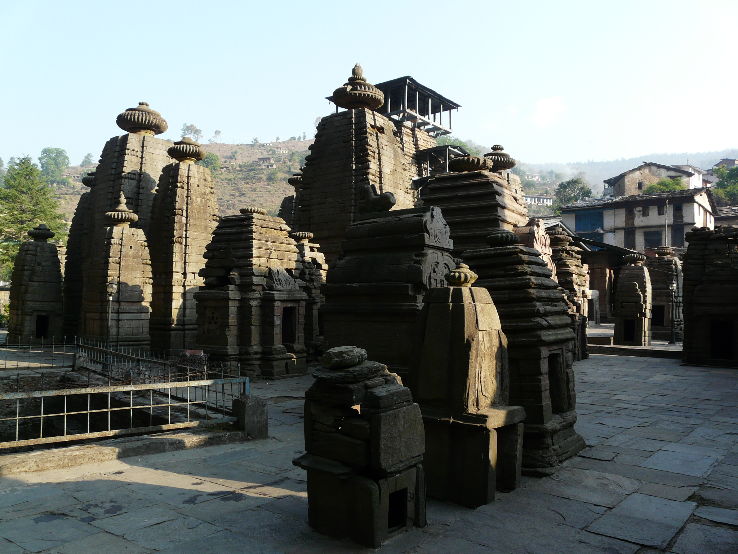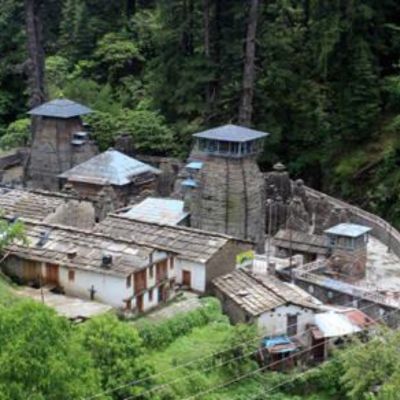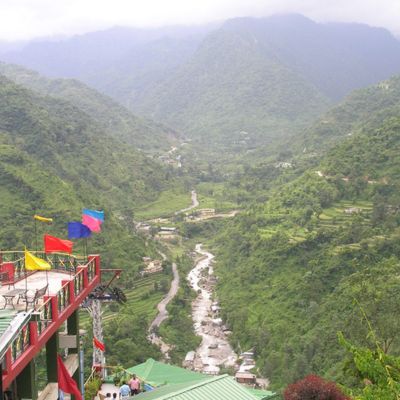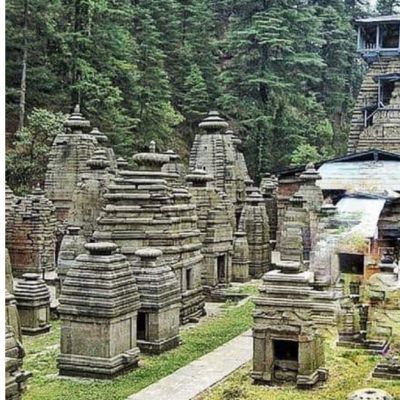Natural Beauty of Jageshwar
Surrounded by towering deodar trees and nestled in a valley, Jageshwar is a paradise for nature lovers. The tranquil environment, coupled with the gurgling sound of the Jata Ganga River, makes it an idyllic retreat.
-
Forest Walks and Birdwatching: The deodar and pine forests around Jageshwar are perfect for leisurely walks. These forests are also home to a variety of bird species, making it a haven for birdwatchers.
-
Streams and Waterfalls: The Jata Ganga and nearby waterfalls add to the charm of Jageshwar, offering picturesque spots for photography and relaxation.
-
Panoramic Views of the Himalayas: Jageshwar’s location provides stunning views of the Himalayan peaks, especially during sunrise and sunset.
Historical Significance of Jageshwar
Jageshwar holds immense historical importance as it is believed to be one of the 12 Jyotirlingas in Hindu mythology, although this claim is debated. The temples here are thought to date back to the 9th to 13th centuries AD and were built by the Katyuri dynasty and later renovated by the Chand kings. The intricate stone carvings and Nagara-style architecture reflect the rich cultural and artistic heritage of the region.
The temples in Jageshwar have inscriptions that provide valuable insights into the ancient history of Uttarakhand, including the rule of the Katyuris and subsequent dynasties. The Archaeological Survey of India (ASI) has also played a significant role in preserving these historical treasures.

Jageshwar Mahadev Temple

Dandeshwar Temple

Sahastradhara

Chandika Temple
The Temples of Jageshwar Dham
Jageshwar Dham comprises a cluster of over 100 stone temples dedicated to various Hindu deities, with Lord Shiva being the primary deity.
-
Jageshwar Mahadev Temple: The Jageshwar Mahadev Temple is the centerpiece of the temple complex. Dedicated to Lord Shiva, this temple houses a sacred Shivling and is adorned with exquisite stone carvings.
-
Dandeshwar Temple: Situated slightly away from the main complex, the Dandeshwar Temple is the largest temple in Jageshwar and is dedicated to Lord Shiva.
-
Chandika Temple: This temple is dedicated to Goddess Chandi and showcases the rich sculptural tradition of the region.
-
Other Notable Temples: Dedicated to Lord Shiva, Tapkeshwar Temple is a revered Hindu shrine located on the banks of the Asan River. The temple's natural cave setting adds to its spiritual significance.
-
Forest Research Institute (FRI): Kuber Temple: Dedicated to the god of wealth.
Surya Temple: Dedicated to the Sun God.
Navagraha Temple: A shrine to the nine celestial deities.
The serene ambiance of the temples, combined with the melodious chants and the aroma of incense, creates a spiritually uplifting experience.
Spiritual Significance of Jageshwar
Jageshwar is not just an architectural marvel but also a prominent spiritual center. The town is considered a significant part of the Shaivite tradition, attracting Shiva devotees from across the country. According to legends, Jageshwar is where Lord Shiva meditated, making it a vital stop on the ancient Kailash Mansarovar Yatra route.
The annual Jageshwar Monsoon Festival in July-August and the Shivratri Festival see large gatherings of devotees. These festivals celebrate the divine presence of Lord Shiva and showcase the region’s vibrant culture and traditions.
Adventure Activities in Jageshwar
While Jageshwar is primarily a spiritual destination, it also offers opportunities for adventure.
-
Trekking : Jageshwar serves as a base for several trekking trails that take you through dense forests and scenic meadows. Popular treks include the trail to Vriddha Jageshwar, an ancient temple located 3 kilometers uphill from the main complex.
-
Camping: The serene environment of Jageshwar makes it an excellent location for camping. Several operators provide camping facilities in the surrounding forests.
-
Photography: TFrom the intricate carvings of the temples to the stunning landscapes, Jageshwar is a photographer’s dream.
Best time to Visit Jageshwar
The ideal time to visit Jageshwar is between March and June and September and November. During these months, the weather is pleasant, and the natural beauty of the region is at its peak. The monsoon season (July-August) is also a good time to witness the lush greenery but can be challenging due to heavy rainfall. Winters (December-February) are cold, with occasional snowfall transforming the region into a winter wonderland
How to Reach Jageshwar
-
Air By: The nearest airport is Pantnagar Airport, located approximately 150 kilometers away. From Pantnagar, you can hire a taxi to reach Jageshwar.
-
By Rail: The closest railway station is at Kathgodam, about 125 kilometers from Jageshwar. Regular taxis and buses are available from Kathgodam to Jageshwar.
-
By Road: Jageshwar is well-connected by road to major towns like Almora (36 km), Nainital (100 km), and Delhi (400 km). Buses and private taxis are the most common modes of transportation.
Conservation Efforts and Challenges
The temples of Jageshwar are maintained by the Archaeological Survey of India (ASI), ensuring their preservation for future generations. However, the town faces challenges such as over-tourism, deforestation, and climate change. Local authorities and NGOs are working to promote eco-tourism and sustainable practices to mitigate these issues.
-
First thing first, you need to learn How to register for Char Dham Yatra
-
Discover all about the Himalayan Char Dham Yatra.
-
All you need to know about Uttarakhand.
-
Follow this useful article for Packing Tips For Uttarakhand.
-
Learn more about the Things to Do and Don't do during Char Dham Yatra
Have something to ask? Call for an instant question or begin a Chat on WhatsApp.
If planning for an Uttarakhand Tour Package, please fill this Reservation form.